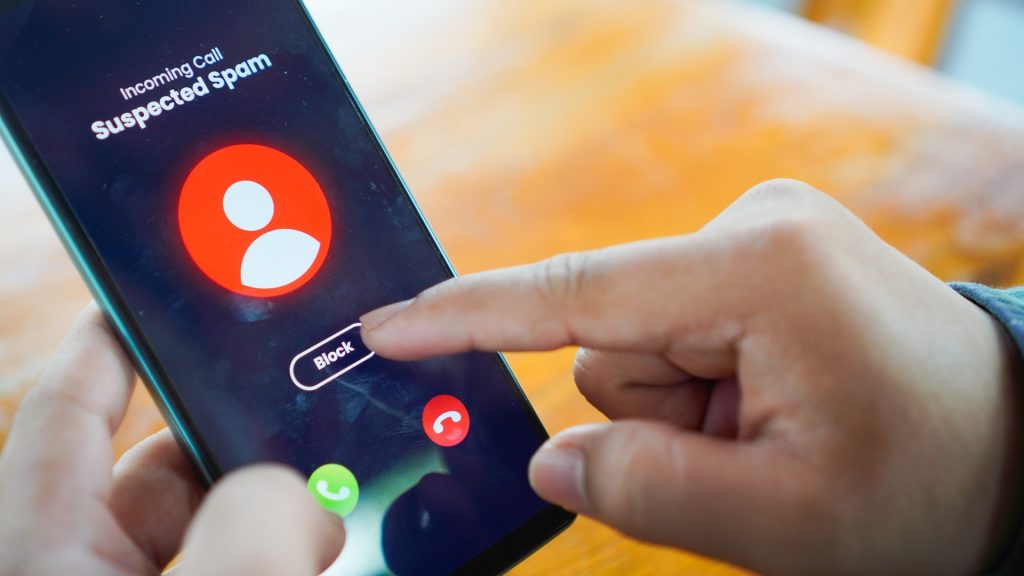Spam alert: Americans receive 2.56 billion robocalls a month

Your phone rings, and before you answer it, you see “Potential Spam” above the number on your phone. Sound familiar? If so, that was one of the 2.56 billion robocalls that Americans receive each month, according to a new study from the U.S. PIRG Education Fund.
The average monthly volume of telephonic spam is at its highest volume since 2019, when monthly calls averaged around 2.83 billion. That same year, Congress passed the Telephone Robocall Abuse Criminal Enforcement and Deterrence (TRACED) Act, which required phone companies to implement caller ID authentication.
Most phone companies aren’t fully compliant
Despite the 2019 federal mandate, only 44% of phone providers have fully adopted the required caller ID authentication technology. That’s down from 47% in 2024, according to PIRG’s latest findings.
“Some companies that had installed the technology network-wide merged with or started doing business with a company that wasn’t completely compliant, or installed new equipment that isn’t compliant,” the report said.
PIRG also noted that some provider data from 2024 may not have been accurate, suggesting inconsistencies in self-reported compliance.
Scam calls and texts are costing victims thousands
Beyond being disruptive, robocalls and scam texts are financially damaging.
PIRG reports that in the first half of 2025, people who fell victim to scam calls lost an average of $3,690. Scam texts cost victims an average of $1,452 over the same period.
The most common scam texts are package delivery notifications and job offers. In delivery scams, fraudsters often send a link that leads to a site requesting payment. Job-related scams typically offer easy tasks, such as product reviews or liking videos, all designed to collect personal data.

Other common text scams include:
- Fraud alerts.
- Unpaid ticket notices.
- “Warm texts” that mimic wrong-number conversations like “Are we still on for lunch today?”
Common types of scam calls
The list of scam robocalls is even longer. It includes:
- Loan scams, often involving student loans or mortgages.
- Health insurance fraud.
- Car warranty offers.
- IRS scams requesting sensitive personal information.
- Credit card, solar energy and investment offers.
- Sweepstakes, charity and “free trial” traps.
The Federal Communications Commission (FCC) says it has increased enforcement, requiring phone companies to authenticate caller ID and issuing millions of dollars in fines against illegal robocallers.
What makes a robocall illegal?
According to the Federal Trade Commission, a robocall becomes illegal if you haven’t given consent to be contacted via automated calls with prerecorded messages.
Consumers can file a complaint, but scammers often hide behind spoofing technology, making it difficult to trace the origin of the call.
Unbiased. Straight Facts.TM
The FCC approved a $10,000 penalty on Jan. 3, 2025, for phone companies that submit false or inaccurate robocall mitigation data.

How to block robocalls on your phone
Here are the FCC’s current recommendations for robocall protection by mobile carrier:
- AT&T: ActiveArmor mobile security app to stop spam and scams.
- Google Project Fi: Built-in call blocking options for Fi service.
- T-Mobile: ScamShield app to block scam and robocalls.
- U.S. Cellular: CallGuardian app with advanced call filtering and blocking.
- Verizon: Call Filter tool for screening and blocking suspicious calls.
The FCC also provides tips for blocking robocalls on landlines on its website and lists third-party tools that may be helpful.
The post Spam alert: Americans receive 2.56 billion robocalls a month appeared first on Straight Arrow News.





